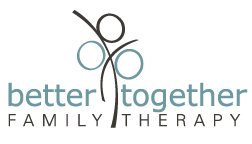10 Steps for Practicing Radical Acceptance
Have you ever heard the phrase “it is what it is?” Maybe you had a hard day, and things felt so out of control that all you could say was: “it is what is it is.” You didn’t know it, but you were practicing radical acceptance. Well…sort of.
So, what is radical acceptance? A neurodiversity affirming therapist in Maryland explains.
Radical acceptance is a tool used in Dialectal Behavioral Therapy (DBT) founded by Marsha Linehan. The term is also often used by Tara Brach.
Radical acceptance is the ability to accept situations that are outside of your control without judging them; this reduces suffering caused by the situation.
Radical acceptance means full acceptance of reality with your mind, body, and spirit. It is accepting that reality is unfolding the way it is.
Radical acceptance is not approval of the situation. Instead, it is acknowledging that the situation occurred, but cannot be changed. It shifts your focus off what you cannot control (the situation) to what you can control (your response).
Radical acceptance isn’t ignoring your emotions. Instead, you address your emotions and pain, but you do not allow it to turn into suffering. This means watching your thoughts and feelings to identify when you are allowing yourself to feel worse than is necessary.
Is radical acceptance neurodivergence friendly?
Absolutely! In fact, acceptance is an exit ramp from the circular paths our thinking can take. It’s an antidote to the rumination we tend to get stuck in. Our neurodivergence experts talk more about antidotes to rumination in our post on Conquering the 3 Mental Enemies of Adults with ADHD.
When can I use radical acceptance?
Radical acceptance is best used in situations where you’re unable to change what has happened or when you feel the situation was unfair. For example, the loss of a loved one or losing one’s job.
The emotions associated with such situations are very normal and can be painful, yet suffering occurs when the initial pain is prolonged due to a lack of acceptance. Remember, it is a skill that gets better the more that you practice it.
Still, it may feel overwhelming. Do your best to be patient with yourself. Self compassion and radical acceptance are closely connected. If radical acceptance is feeling like more than you can do, try our post on self compassion here.
10 Steps for Practicing Radical Acceptance
Observe that you are fighting against reality. (Ex: “It shouldn’t be like this.”)
Remind yourself that the unpleasant reality cannot be changed. (Ex: “It happened.”)
Acknowledge that something led to this moment. (Ex: “This is how it happened.”)
Practice acceptance with not only your mind, but your body and spirit. Be mindful of your breath, posture.
List what your behavior would look like if you did accept the facts then act accordingly.
Plan ahead with events that seem unacceptable and think about how you should appropriately cope.
Remain mindful of physical sensations throughout your body such as tension or stress.
Embrace feelings such as disappointment, sadness, or grief.
Acknowledge that life is worth living even when there might be temporary pain.
If you find yourself resisting, complete a pros and cons exercise to better understand the full impact of your choice.
When ADHD or anxiety makes it harder to practice radical acceptance, try this.
So you want to start practicing radical acceptance, but you hit a roadblock. Maybe you start new habits enthusiastically, but quickly stop practicing them. Or your brain jumps straight to all the reasons why this won’t help you. Then this section is for you.
We specialize in treating adults, kids, teens, and families whose neurodivergence can make things a little harder. It makes starting a new, mentally healthy habit a little harder too. These tips and tricks should help.
Perhaps in step 1 above, you find yourself going on a rant about how and why it shouldn’t be like this. You get angry, and get stuck there. If it’s hard to observe yourself and notice the rant, make it concrete. Write out everything you are thinking. Notice the length of what you’ve written. Say to yourself “I am thinking a lot about how wrong this is… and it still is.”
In step 3 you may wonder what led to this moment, or see infinite possibilities. You might focus on how the things that happened here might also lead to other bad things happening. It’s frightening to not know how we got here, or what’s next. Try drawing a small circle in the center of a page. Place one small thing you do know in the middle of the circle. If you need to, write your questions and worries around the edges of the page. Cup your hands around the circle, and look inside. Now try step 3 again.
In step 4, get physical. If you have racing thoughts or tend to ruminate, let your body lead the process. Try progressive muscle relaxation, noticing both your tight, resistant posture and your relaxed, releasing stance.
If you find that your mood gets in the way, try taking these steps to tackle that first. And if it’s still really hard? Remember that it’s supposed to be. Show yourself compassion and keep trying. We wouldn’t need to write this post if this was easy!
Pain cannot be avoided. It is a part of life that we all experience. Your pain does not have to turn into suffering. Radical acceptance is a helpful tool that can lead us away from suffering to acknowledging our emotions. It allows us the freedom to focus on what we can control and let go of what we cannot.
When you’re ready for radical acceptance to transform your thinking, reach out to our neurodiversity affirming therapists. We’ll guide you on your journey to self acceptance.
You spend most of your life in your head. You might as well make it a nice place to be.

